
The Ant Man
-
Posts
27 -
Joined
-
Last visited
-
Days Won
1
Content Type
Profiles
Forums
The Numis Journal
Events
Downloads
Gallery
Store
Classifieds
Posts posted by The Ant Man
-
-
Leave it. My Claudius Gothicus has similar patina and I love it.
-
 1
1
-
-
Something not quite an antoninianus but still very interesting.

Double Antoninianus
Tacitus
Antioch Mint, 275-276 CE
Obverse legend: IMP C M CL TACITVS AVG
Reverse legend: CLEMENTIA TEMP
Reverse design: Tacitus, standing right, holding sceptre and receiving globe from Jupiter, standing left, holding sceptre.
This is a failed monetary reform attempt of issuing a double antoninianus similar to how the antoninianus was supposed to be a double denarius. The difference is the size and weight were the same as a normal antoninianus but the silver content is doubled to 10% hence the lettering "XI" to indicate 10 parts base to 1 parts silver. This attempted failed because of how similar they are to antoninianus.
Interestingly tho, Carus also apparently made double antoninianus, but there are extremely rare and as far as I am aware, only two in existence.
-
 2
2
-
-
Thank you! This is one of the topics I loved the most at CoinTalk.
-
 1
1
-
 1
1
-
-
Here are some more antoninianus.

Gordian III
Antioch mint: 242-244 CE
RIC IV Gordian III 216E
Obverse legend: IMP GORDIANVS PIVS FEL AVG
Reverse legend: SAECVLI FELICITAS

Herennius Etrucus
249-250 CE, Rome Mint
RIC IV(III) 147C
I swear whoever made the dies of Herennius Etrucus just saw old dies of Gordian III and was like "great idea let's use them".
-
 4
4
-
-
-
16 hours ago, Sulla80 said:
Welcome @The Ant Man - some lovely Antoniniani in your collection. Here's a Pupienus :
That is a really nice Pupienus
-
 1
1
-
-
19 hours ago, ominus1 said:
Blimey, those are some nice Aemilian, one with the same reverse too.
-
 1
1
-
-
10 hours ago, Qcumbor said:
Your Valerian and Gallienus are exceptional.
-
 1
1
-
-
Here are two xceptional examples of emperors that usually are known for making bad quality coins.

Gallienus
Rome Mint, 257-258 CE
Obverse legend: IMP GALLIENVS AVG
Reverse legend: SALVS AVGG
Reverse diety: Salus
22mm, 4.42 grams
RIC V Gallienus 397C
For an emperor who later had to debase his coinage into oblivion, this is a exceptional early example of his earlier coins. While the reverse design is weakly struck. His obverse is well made with great detail.

Claudius II Gothicus
Antioch Mint: 268-270 CE
Obverse legend: IMP C CLAVDUVS AVG
Reverse legend: IVNO REGINA
Reverse diety: Juno
RIC V Claudius II 212
21mm 3.03 grams
Claudius Gothicus minted some extremely low quality coins, but this example from the Antioch mint is well made and the desert patina enhanced the details. There are still traces of silvering left.
-
 5
5
-
-
Also to whoever originally posted the Diocletian secret message. I could't find the message anymore.
-
47 minutes ago, Ancient Coin Hunter said:
The problem with a lot of ants is low weight.
Like 1.5x the weight of the denarius but tariffed at 2.
The taxpayer was at a loss.
Similarly Carcalla's extension of Roman citizenship likely increased the tax rolls, rather than being a humanitarian gesture.
The low weight of antoninianus is definitely the biggest problem at the start of the denomination. The Trajan Decius and Trebonianus Gallus ants the reason I speculated that they were overstruck denarii from the Severans is because their low weight but exceptionally high purity.
-
6 hours ago, Heliodromus said:
Hi Ant Man, nice and less common collection focus! Are you not tempted to collect by reverse type as well as by emperor?
My collection essentially starts where yours leaves off, with the coinage reform of Diocletian and introduction of the nummus, although my real focus is Constantine I from a few years later. I do still have a few ants myself, and this Rome Annona (RIC V.2 156) is probably my favorite. The singular AVG vs AVGG indicates a date at the beginning of Diocletian's reign before he appointed Maximianus as co-ruler.
That is so interesting. Thank you for telling me this.
-
Here is an interesting Antoninianus.
Trajan Decius.
Rome Mint, 249-251 CE
Obverse legend: IMP C M Q TRAIANVS DECIVS AVG
Reverse legend: GENIVS EXERC ILLVRICIANI

Trebonianus Gallus
Mediolanum Mint, 251-253 CE
Obverse legend: IMP C C VIB TREB GALLVS AVG
Reverse legend: PAX AFTERNA
22mm, 3.22 grams.

What is interesting about these two coins that they share in common is that they are underweight compared to antoninianus of that time period (3.47 & 3.22 grams instead of 3.7-4 grams). However, I did ask a shop to do a XRF test and their silver purity was at a surprising 50%. I did some further research and apparently during that time some antoninianus were minted via striking over old Severan era denarii in order to save time and money. But stopped due to the silver value over time going above the face value.
-
 8
8
-
-
2 minutes ago, Ancient Coin Hunter said:
My guess on that one is that the celators did not have a bust of Macrinus to work with so they extrapolated from Caracalla. Kind of reminds me of the early Maximinus coins that bore a resemblance to Severus Alexander....
You know, now that you mentioned it Macrinus bust does bear a resemblence.
-
5 hours ago, Heliodromus said:
Hi Ant Man, nice and less common collection focus! Are you not tempted to collect by reverse type as well as by emperor?
Maybe not reverse type, but maybe the Augusta issue or the Secular games wouldn't be a bad idea.
-
 1
1
-
-
Also something that is comparable to my Aemilian antoninianus condition wise.
Rome Mint, 217 CE
I suspect this is probably some of the first antoninianus minted by Macrinus, due to the message on the reverse FIDES MILITVM could be a reference to the usurptation of Caracalla. As well his later coins shows him with a longer beard.

-
 12
12
-
 3
3
-
-
Since the first two coins I posted are so well received, here are some more antoninianus in my collection.
Caracalla, Rome Mint, 216 CE
23mm, 5.34 grams.
This is the second year the coinage type was issued. This coin is well preserved and I really like that it is well struck and most details are remaining.
-
 13
13
-
-
16 minutes ago, PeteB said:
Nice Pupienus unfortunately it is sold.
-
-
-
ohhh got it. Lemme fix this.
-
18 minutes ago, Tejas said:
So this is a double Antoninian, i.e. a quadruple denarius? Could you post the weight and size of this coin please?
22mm, 3.89 grams.
This coin has the same size as a antoninianus but has double the silver content. Hence the XI instead of XXI to indicate 10% silver.
-
-
Caracalla
Macrinus
Diadumenian
Elagabalus
Balninus
Pupienus
Gordian III
Philip I
Philip II
Trajan Decius
Herennius Etrucus
Hostilian
Trebonianus Gallus
Volusian
Aemilian
Valerian
Valerian II
Saloninus
Gallienus
Claudius II Gothicus
Quintillus
Aurelian
Tacitus
Florian
Probus
Carus
Numerian
Carinus
Diocletian
Maximian Herculius
Constantius I
GaleriusOut of the list the bolded ones are the ones I am missing. Saloninus should be easy, Pupienus I need to save. Diadumenian will be a pain as he is hard to find in general as well as being pricy. But compare to similar popular types to collect this is far more within my capabilities.
-
 6
6
-
 1
1
-









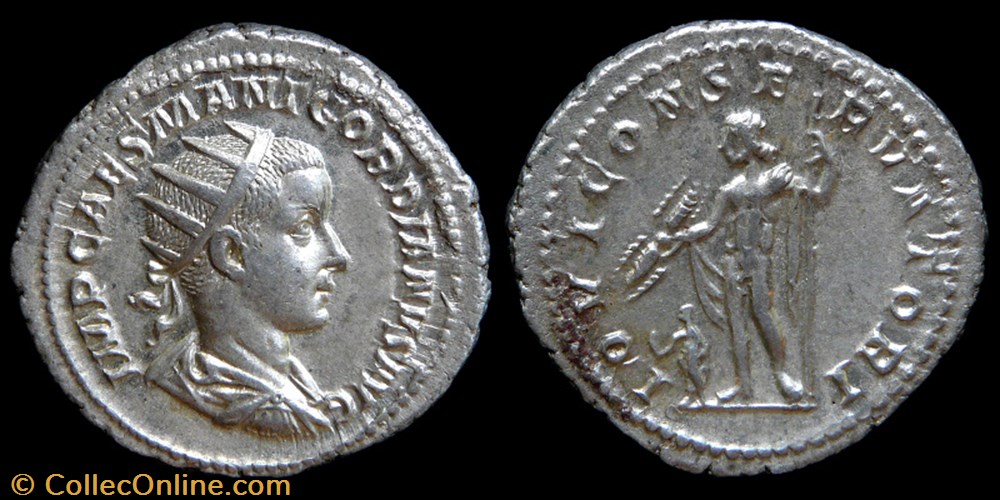
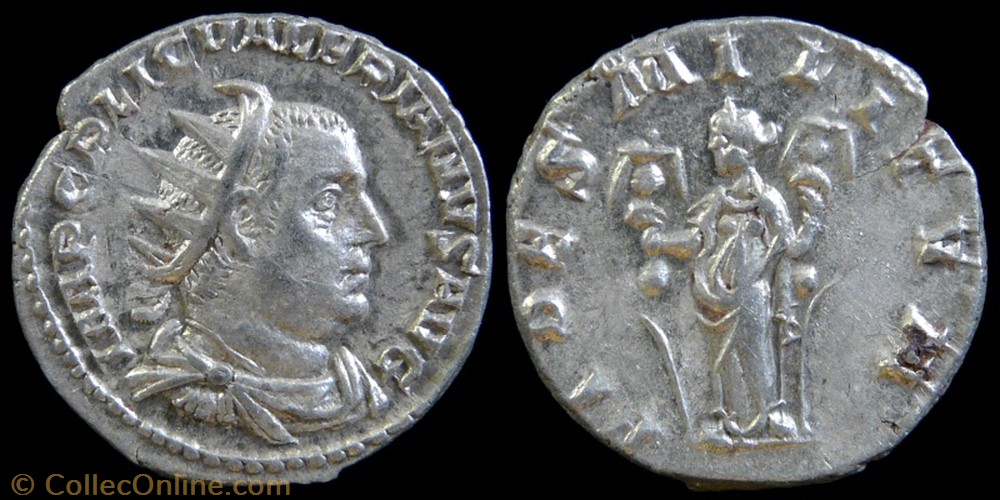
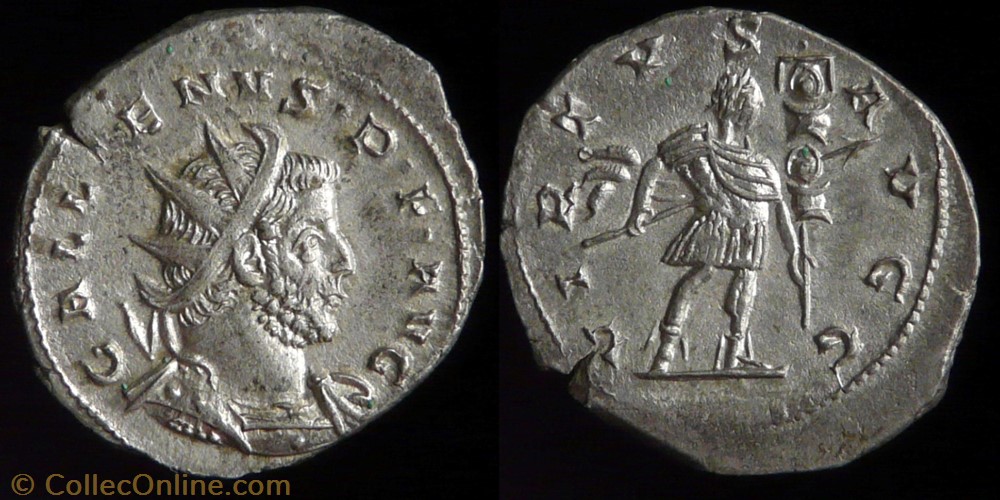
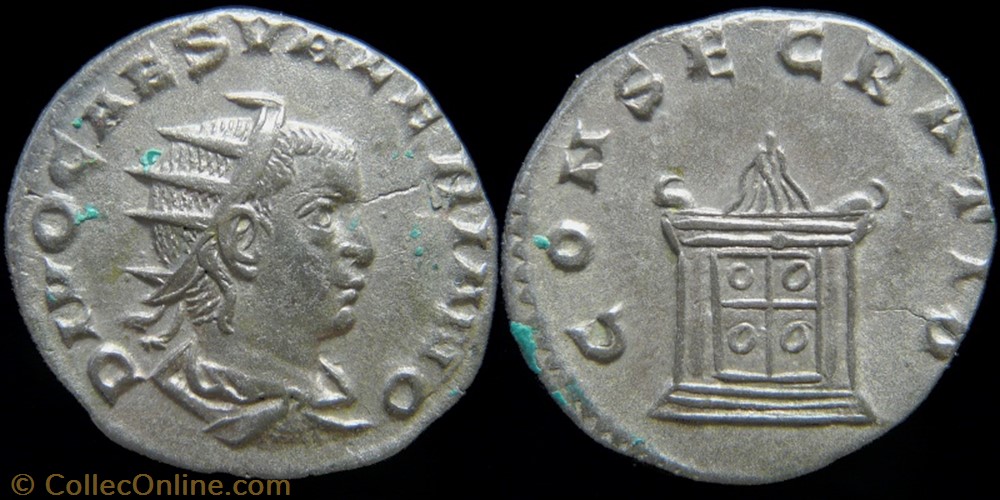
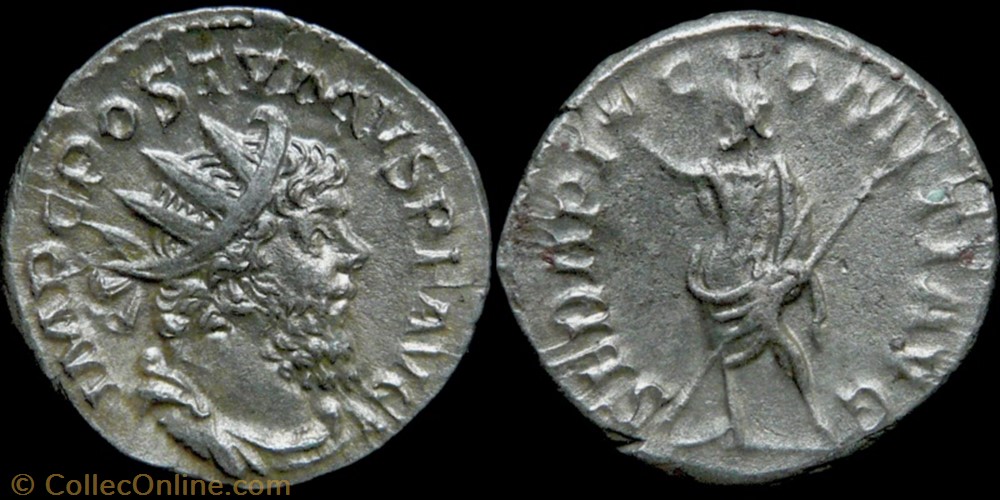
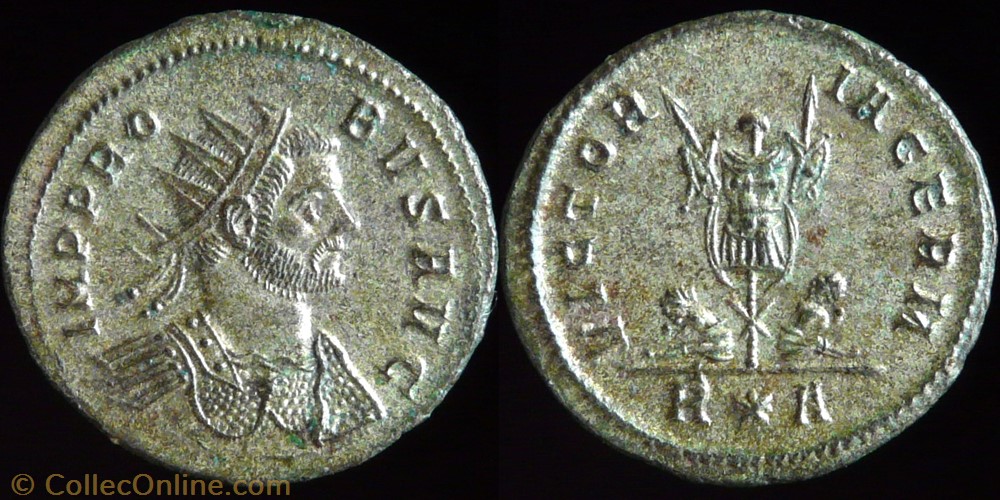














Deep look at Ant Man's antoninianus
in Roman Empire
Posted
After the success of my first topic. I figured that I want to make an in depth look of each individual coin in my collection. Here is the first of the ants, Caracalla.
Antoninianus
Rome Mint, 216 CE
Obverse legend: ANTONINVS PIVS AVG GERM
Obverse design: Bust of Caracalla, radiate, draped, right facing.
Reverse legend: P M TR P XVIIII COS IIII P P
Reverse design: Separis, wearing polos on head, standing, head left, raising right hand, holding tranverse sceptre in left hand.
RIC IV Caracalla 280D.
23mm, 5.34 grams
Caracalla instituted the new denomiation in 215 CE in an attempt to increase revenue to pay his expenses. There are no records of what this new denomiation was named during the Roman Empire, hence Caracalla's official name Antoninus was used to name this coin. The radiate crown was to indicate the new coin was worth the face value of two denarii similar to the dupondius being worth two ases with the emperor wearing radiate crown. However, people quickly found out that these coins only has the silver of around 1.5 denarii while having a face value of 2. This reform caused inflation & economic chaos in the Empire as people quickly raised prices to account for the missing silver and hoarded denarii away. While this coin was supposed to be a temporary measure. It soon became a permanent feature and as time went on, destroyed the Augustus coinage standard by replacing all other denominations with its continuous debasements and in turn, the Roman economy.
This example is part of my collection. XRF analysis showed this coin to be 50% silver, roughly on par with the denarii of that time period. The obverse legend's full description is Antoninus Pius Augustus Germanicus. He adopted the title Germanicus after the Alamannic War in Raetia.
The reverse shows Serapis, god of healing, which Caracalla has an interesting story with the Graeco-Egyptian god. During his co-reign with his father Septimeus Severus, the Separeum in Alexandria was renovated when both were present. When Caracalla assassinated Geta in 211 CE, he dedicated the weapon to Serapis. After Caracalla's ancesion as sole emperor in 212 CE, the Rome Mint started to strike coins bearing Serapis. He later also dedicated a temple at the Quirinal Hill, indicating the central role Serapis played during his reign. The reverse legend full desciption goes as Pointefex Maximus, Tribunicia Potestas 19th year, Counsel for the 4th time, Pater Patriae. I was able to date the coin because he became a tribute in the year 197 CE.
This coin is in EF condition with wear at the highest points. I assume this coin was quickly hoarded away due to the condition it is in. Well struck with a well centred flan and most details remaining. A great survivor of the first example of the denomiation that would eventually bring the end of the Augustus coinage standard and would eventually end with the Reforms of Diocletian.